-
-
FeaturesคุณสมบัติPenyelesaianRecursosFiturCaracterísticas精选功能精選功能المزايا
-
Solutionsโซลูชั่นPenyelesaianSoluçõesSolusiSoluciones解决方案解決方案الحلول
-
IntegrationsการผสานรวมIntegrasiIntegraçõesIntegrationsIntegraciones集成平台整合دمج مع تطبيقات أخرى
-
Affiliate/Partnersพันธมิตร/พันธมิตรทรัพยากรAfiliasi/Rakan KongsiAfiliados/ParceirosAfiliasi/MitraAfiliados/Partners联盟/合作伙伴聯盟/夥伴شريك
-
ResourcesจองการสาธิตSumberRecursosSumber dayaRecursosالموارد
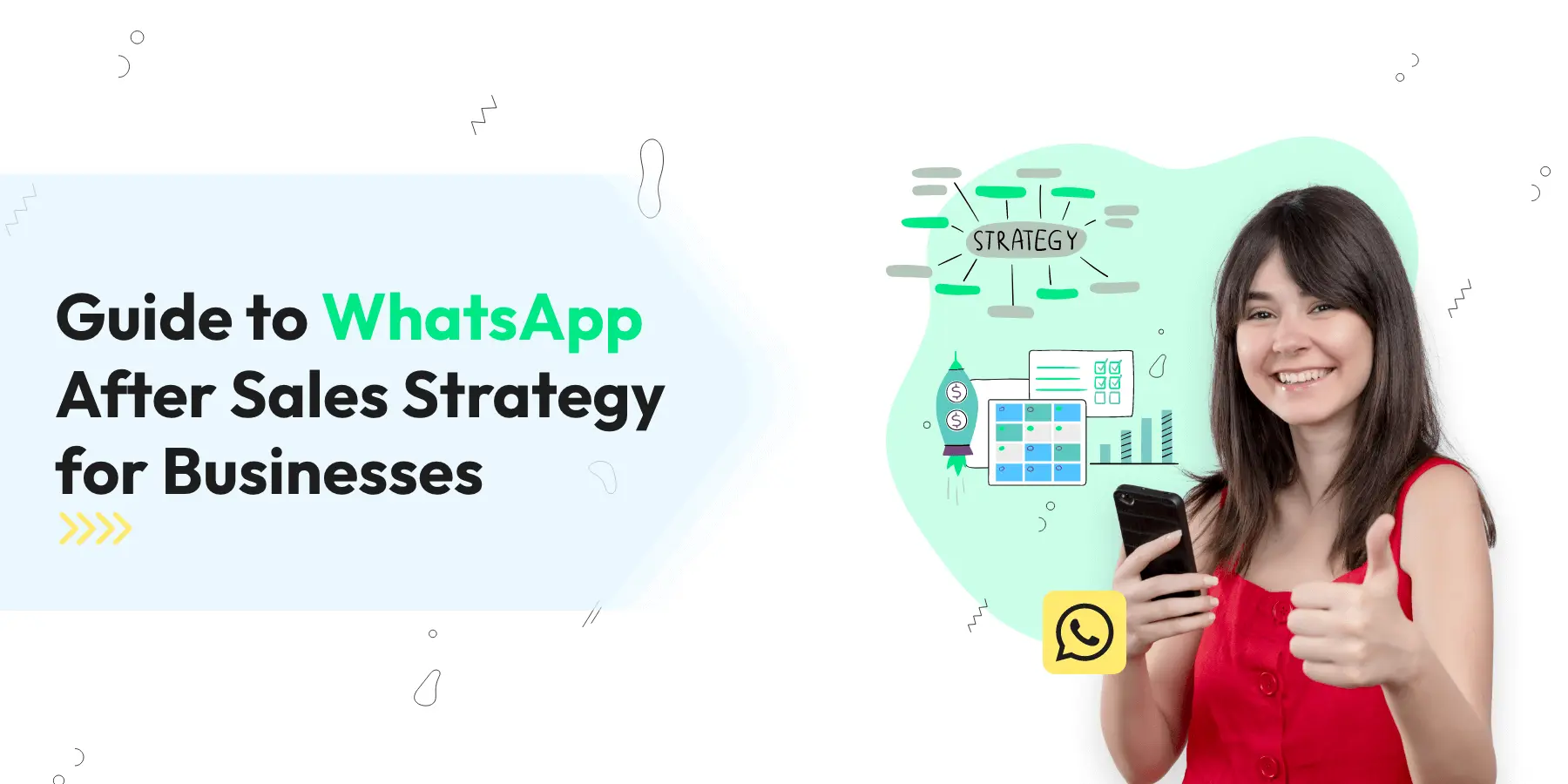
Guide to WhatsApp After Sales Strategy for Businesses (2024)
Are you looking for ways to enhance your after-sales process and provide a superior customer experience? Look no further than incorporating automation, specifically chatbots, into your strategy. By leveraging the power of chatbots, you can streamline your after-sales process and free up your agents to focus on more complex tasks.
One effective platform for implementing this strategy is the WhatsApp Business API. With its enterprise-grade features and support, the WhatsApp Business API allows businesses to communicate with customers through WhatsApp. This enables efficient and cost-effective communication and opens up opportunities for tailored follow-up messages and intelligent recommendations based on customer purchase histories.
So why wait? Let’s explore the potential of WhatsApp as a game-changer in your after-sales journey.
Key Takeaways
- Incorporating automation, such as chatbots, can streamline the after-sales process.
- The WhatsApp Business API allows businesses to communicate with customers through WhatsApp, providing enterprise-grade features and support.
- Chatbots can handle simple, repetitive tasks in after-sales, freeing up agents to focus on more complex tasks.
What is After-Sales?
After-sales means helping customers after they buy something. It includes:
- Making sure the product’s warranty works,
- Fixing the product if needed,
- Helping customers with tech problems, and
- Answering customer questions.
Good after-sales service makes customers happy and helps them if they have problems. It also makes customers want to come back and buy more in the future.
What is the Purpose of After-Sales?
The main aim of after-sales service is to make customers happy and keep them coming back. Great after-sales service can make customers more loyal, leading to more sales and profits. Here’s how after-sales service is helpful:
- Ensuring Customer Safety: After-sales support makes sure customers are safe. It shows your company cares about their happiness with their purchase. This includes helping with any problems, like fixing technical issues or showing how to use the product well.
- Providing Peace of Mind: After-sales support makes customers feel secure. Knowing they can get help if needed makes them more confident and less worried about potential issues.
- Preventing Security Issues: Ongoing support can stop security problems. Keeping customers informed about updates or patches keeps their products safe.
- Quick Problem Solving: After-sales helps solve issues fast. If a customer has a problem, they can get quick help from your support team. This reduces their frustration and doesn’t disrupt their work.
- Understanding Customer Needs: After-sales remembers what customers need by following up. This could be asking for feedback or updating them about product changes. It also includes offering help and resources if they have problems.
- Boosting Company Image: Good after-sales service shows you care about customers. This improves your company’s image and avoids negative reviews. Happy customers are less likely to complain publicly, protecting your reputation.
- Building Customer Loyalty: Positive after-sales experiences make customers stick around. They’re more likely to buy again. A bad experience, however, might end the relationship. Being responsive and offering flexible returns can boost loyalty.
- Contributing to Company Growth: Satisfying customers and keeping a good reputation can increase loyalty and retention, helping your business grow. After-sales service also opens doors for more sales and feedback, allowing you to improve your products and services.

What’s the best way to handle after-sales?
Understand Your Customers:
Get to know them through surveys or feedback forms. This helps you learn about their experiences and how to enhance your after-sales service. Use tools like live chat or social media for direct interaction, gaining insights into their needs and preferences. Analyze customer data to better understand their buying habits and preferences, tailoring your after-sales service accordingly.
Utilize APIs for Support:
APIs help integrate different systems for better communication and information exchange. They enable quicker, more efficient customer service. For example, with APIs, you can quickly access a customer’s information to solve their issues more effectively. Companies like Treble.ai use WhatsApp API, offering demonstrations for interested businesses.
Offer Great Customer Support:
Offer reliable support and troubleshooting after a purchase. This maintains customer satisfaction and builds brand loyalty. Support can be through customer service lines, live chat, WhatsApp, social media, or online resources like tutorials and user guides.
Conduct Satisfaction Surveys:
These surveys gather customer opinions and experiences, highlighting improvement areas. They are valuable for collecting data and improving service quality and customer support. Surveys also show customers that their feedback is important and that you’re committed to enhancing their shopping experience.
Setup Effective Follow-Up Practices:
Show care for customers by following up and addressing any issues or questions they may have. Decide on the frequency of follow-ups (weekly, biweekly, or monthly). Prepare a list of questions to gather comprehensive information about their experience. Listen actively to your customers to identify any problems or areas for improvement.
How to Setup a Good After-Sales Strategy?
To build an effective after-sales strategy that ensures customer satisfaction and loyalty, consider these steps:
Establish a Loyalty Program:
Get to know your customers better through methods like surveys and interviews, which can provide insight into their needs and what they expect from your brand. Clearly outline what you aim to achieve with your loyalty program. Whether it’s increasing sales, boosting customer loyalty, or both, set specific goals to gauge the program’s success.
Formulate an Action Plan:
Once your objectives are defined, develop a strategy for reaching these goals and detail how you will roll out the loyalty program. Provide incentives that truly appeal to your customers. Determine what rewards will encourage them to engage with your program, such as unique discounts, special gifts, or access to exclusive events.
Market Your Loyalty Program:
It’s vital to ensure your customers are aware of your loyalty program and understand how to join. Utilize a range of communication methods, including social media, email, and online ads, to effectively reach them. By following these steps, you can craft a loyalty program that greatly enhances customer satisfaction and strengthens their loyalty to your brand. Remember, it’s also important to continually assess the program’s performance and make necessary adjustments after its implementation.
Keep Customers Updated on New Releases and Advice:
Consider keeping your customers informed about new products and tips. Create an email list or newsletter to notify them about the latest product or service launches. This keeps them informed about your offerings and provides them an early opportunity to purchase new items.
Use the email list to share useful tips or advice about your products or services. For instance, if your business is in beauty products, you could send emails with application techniques or tricks for better results.
Social media is another effective way to update customers about new launches and suggestions. Post on platforms like Facebook, Instagram, or Twitter to disseminate the latest information and tips. This also facilitates interaction with your audience and allows you to address their queries or feedback.
Send Gifts on Important Occasions:
Sending gifts on special dates is a highly effective after-sales strategy. To implement this:
- Pinpoint dates that are meaningful to your customers, such as birthdays, anniversaries of their purchases, holidays, or other notable occasions.
- Select gifts that are thoughtful and personalized, reflecting the interests and tastes of your clients.
- Implement a system to track and send gifts on these important dates, using tools like calendars or watchlists to ensure no significant dates are missed.
- Include a personalized note with each gift. A custom message, whether handwritten or on a tailored card, expressing gratitude or congratulations, adds a special touch to the gift.
- Ensure consistency in this approach, incorporating it regularly into your after-sales strategy to foster customer loyalty and enhance their overall experience with your brand.
What are the Benefits of WhatsApp After-Sales Strategy?
Helps Streamline the After-Sales Process with Automation
Incorporating automation into the after-sales process can significantly improve efficiency and customer experience. By utilizing chatbots, businesses can automate repetitive tasks like order tracking, returns, and FAQs. These chatbots can be integrated with WhatsApp, allowing customers to interact with them directly through the app. Through natural language processing and machine learning, chatbots can provide prompt and accurate responses, ensuring that customers receive the assistance they need promptly.
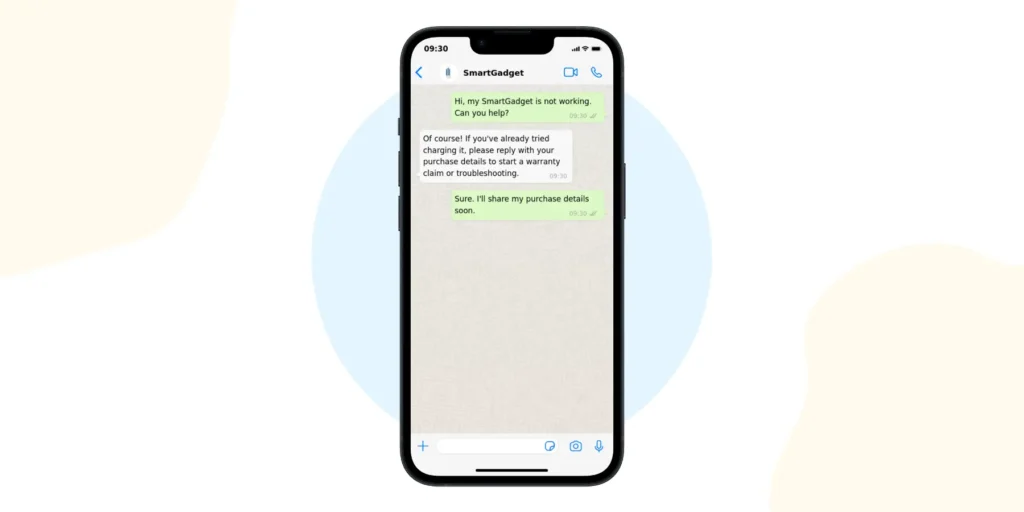
Frees up Agents by Leveraging Chatbots for Simple Tasks
One of the key advantages of integrating WhatsApp into the after-sales strategy is the ability to free up human agents by delegating simple tasks to chatbots. Chatbots can handle routine inquiries, such as product information and basic troubleshooting, allowing human agents to focus on more complex customer issues. By automating these simpler tasks, businesses can improve agent productivity, reduce response times, and allocate resources more efficiently.
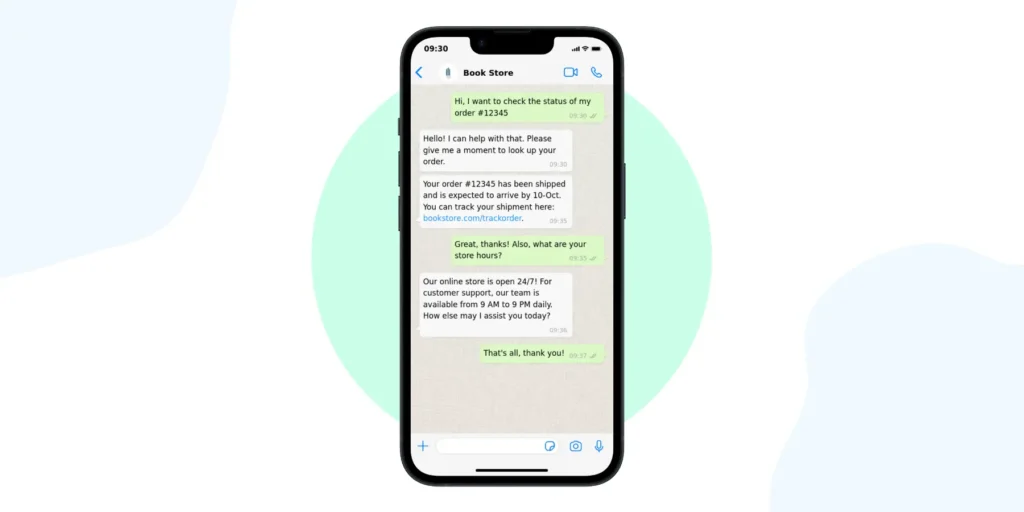
Automate Sending Personalized Follow-Up Messages
The WhatsApp API allows businesses to send tailored follow-up messages to customers. Whether it’s a thank-you message after a purchase or a feedback request, businesses can use the WhatsApp API to personalize their communication and create a more engaging post-sales experience. Businesses can reinforce their brand, build customer loyalty, and encourage repeat purchases by delivering targeted messages that resonate with customers.
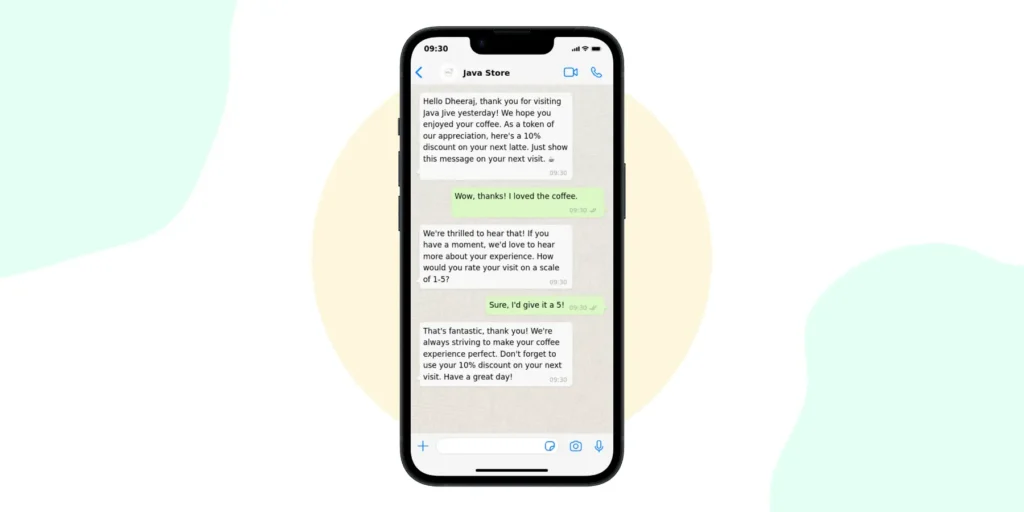
Makes Recommendations Based on Customer Purchase History
Another valuable feature of the WhatsApp API is the ability to make intelligent recommendations based on customer purchase histories. By analyzing past purchases and browsing behaviour, businesses can leverage this data to provide personalized product recommendations through WhatsApp. These targeted recommendations can enhance the customer’s shopping experience and increase the likelihood of making additional purchases.
In conclusion, incorporating WhatsApp into the after-sales strategy can benefit businesses significantly. By streamlining the after-sales process with automation, utilizing the WhatsApp Business API for effective communication, freeing up agents with chatbots, sending tailored follow-up messages, and making intelligent recommendations, businesses can enhance customer satisfaction, foster loyalty, and ultimately drive growth. The WhatsApp Business API provides an efficient, cost-effective, and customer-centric solution for businesses looking to optimize their after-sales strategy.
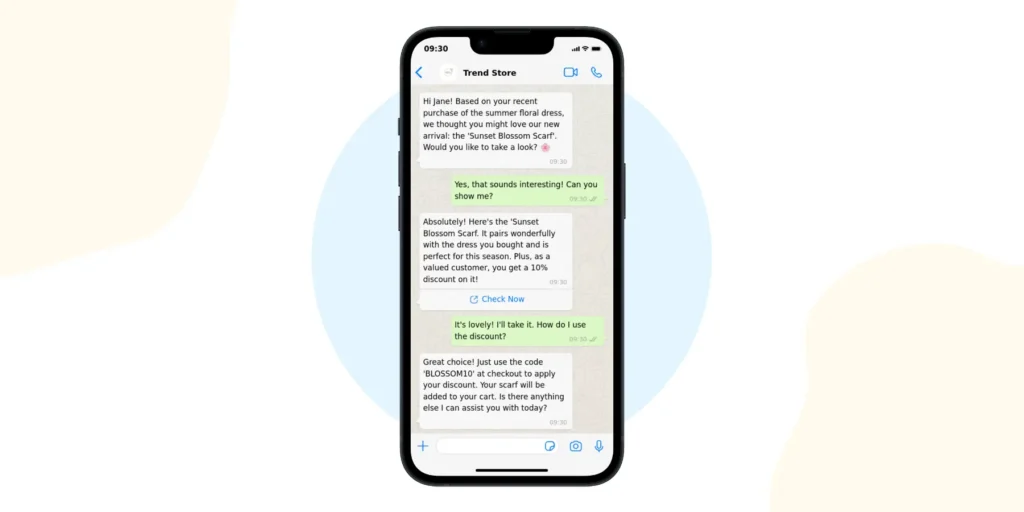
What are the Best Practices for a Good After-Sales Strategy?
The effectiveness of after-sales service is crucial in establishing customer loyalty and encouraging repeat business. Here are some strategies for delivering outstanding after-sales service:
Motivate Your Customers:
- Provide special offers or exclusive discounts to frequent customers to encourage repeat purchases.
- Give personalized attention and swiftly address any issues or inquiries, demonstrating your commitment to their satisfaction.
- Involve customers in your business decisions, like seeking their input on new products or services, to make them feel valued and part of your brand community.
- Offer around-the-clock customer service, ensuring clients know they can rely on you anytime for support or assistance.
Actively Listen to Customers:
- Actively listen to your customers’ needs and concerns, showing that you value their feedback and are committed to resolving any issues.
- Be readily available and reachable through various communication channels, such as phone, email, or live chat.
- Respond promptly to queries or problems with a friendly and helpful approach.
- Communicate clearly and transparently, thoroughly explaining resolutions and keeping clients informed throughout the process.
Enhance After-Sales Value with WhatsApp:
- Establish clear communication channels, including easy contact forms on your website, prompt responses to emails and calls, and live chat support.
- Honour commitments made during the sales process, like timely order updates and warranty honours.
- Go the extra mile with discounts, personalized assistance, or expressions of appreciation to strengthen your business relationship.
Provide Advisory and Maintenance Services:
- Offer technical support to address any post-purchase doubts or issues and conduct regular maintenance for optimal product or service performance.
- Ensure your team comprises highly skilled professionals who offer personalized and efficient service.
- Have a responsive customer service system, such as telephone support, online chat, or email, to swiftly and effectively meet customer needs.

Wrapping it Up:
The WhatsApp AfterSales Strategy offers significant benefits for businesses seeking to improve their after-sales processes. By incorporating automation, leveraging the WhatsApp Business API, and continuously optimizing based on data and feedback, businesses can enhance customer satisfaction, build loyalty, and ultimately drive success. So, why not explore the potential of the WhatsApp AfterSales Strategy and take your after-sales processes to the next level?
Frequently Asked Questions
What is the benefit of incorporating automation, such as chatbots, in the after-sales process?
Incorporating automation, such as chatbots, can streamline the after-sales process. Chatbots can handle simple, repetitive tasks, freeing up agents to focus on more complex tasks. This leads to increased efficiency and productivity in customer support.
How does the WhatsApp Business API help businesses communicate with customers?
The WhatsApp Business API allows businesses to communicate with customers through WhatsApp, providing enterprise-grade features and support. This enables businesses to interact with customers in a familiar and convenient messaging platform, enhancing the overall customer experience.
What tasks can chatbots handle in after-sales?
Chatbots can handle simple, repetitive tasks in after-sales, such as providing basic product information, answering frequently asked questions, processing returns or exchanges, and providing order status updates. This automation helps expedite customer inquiries and provides quick resolutions.
How can the WhatsApp API be used to personalize customer interactions?
The WhatsApp API can be used to send tailored follow-up messages and make intelligent recommendations based on customer purchase histories. By leveraging customer data, businesses can provide personalized offers, suggestions, and support, creating a more personalized and engaging experience for customers.
What are the advantages of using the WhatsApp Business API?
The WhatsApp Business API is efficient, cost-effective, and provides a better overall experience for customers. It allows businesses to communicate through a widely used messaging platform, reducing the need for customers to switch between multiple channels. Additionally, automation through chatbots helps businesses save time and resources while improving customer satisfaction.
Latest Comments